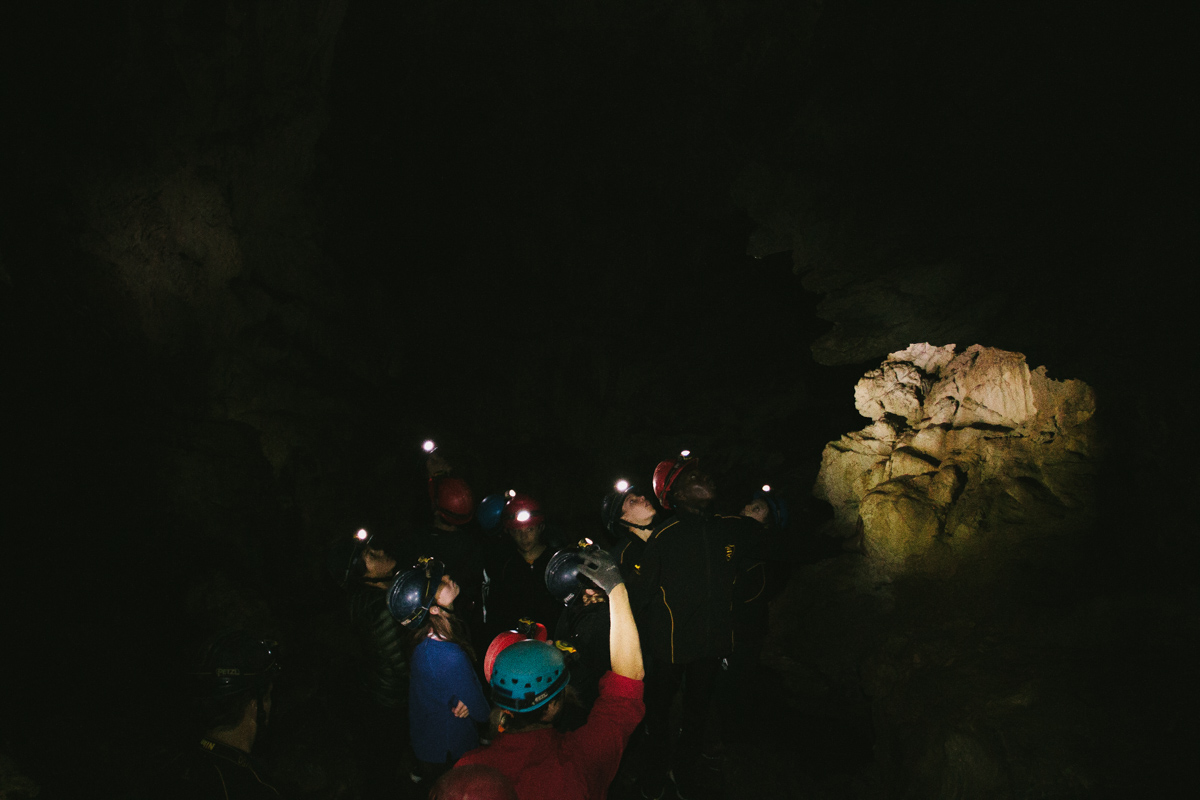The caves of Vancouver Island are comparatively well developed due to high rainfall, dense vegetation, soil cover, and mountainous topography. Environmental conditions favour not only caves, but also classic surface karst phenomena such as dry valleys, rock bridges and arches, and springs. Dry watercourses abound throughout limestone areas and several major rivers flow underground, sometimes for kilometers.
Vancouver Island’s cave and karst landscapes are globally significant ecosystems. Any article on the biology of caves can at best only scratch the surface of understanding the ancient mysteries of our interdependence on caves and their inhabitants, or the intimacy of specialized plant and animal communities that thrive in the pores of the earths living, breathing skin. Caves have become the last refugium for many ancient types of insects, which are no longer found free, in the open, above ground, in the region. The cave fauna thus represent, at least in part, relicts from the past. Cave insects, when suddenly exposed to the outside world, often die very quickly.
Without distinction of day and night, the climate in a cave is remarkably unvaried year round. Although there are steady air currents violent winds and storms are unknown. Humidity changes very little and a river flowing or water seeping in from the outside insures regular quantities of nutritive material so foraging can occur without having to leave the underground. The bats that feed outside but sleep in the cave likewise provide massive deposits of organic matter by way of fecal droppings and dead bodies.
In addition to bats, a variety of other animals penetrate caves for sleeping or for over-wintering: butterflies, flies and other insects, bears, and even humans. The cave environment is thus recognized largely by negative characteristics, viz. absence of light, lack of rhythm of day and night and of seasons, scarcity of available food, limitation of living space, restricted freedom of movements, absence of contrast, absence of marked changes in temperature and humidity.
The ultimate source of food for all cave animals lies naturally outside the cave. Rivers carry in cadavers and other organic debris. Fungi which develop on this detritus provide food for many cave dwellers. Bat guano represents another source. Lepidoptera that enter caves for sleeping are preyed upon by cave crickets. The caverniculous Collembola feed on colloidal matter on the water. The Collembola and cave beetles are devoured by spiders and myriapods. All these activities go on in total darkness.


